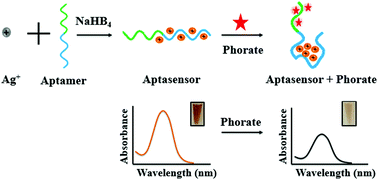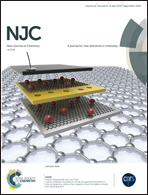One-step, visual and sensitive detection of phorate in blood based on a DNA–AgNC aptasensor
Abstract
The ingestion of organophosphate (Op) pesticides for attempting suicide has been a serious health issue recently. Phorate, a class of Op, has attracted attention in this regard and so the rapid diagnosis and detection of phorate is crucial for human health. In this study, a one-step and visual method for the rapid determination of phorate via an aptasensor based on DNA-templated silver nanoclusters (DNA–AgNCs) has been presented. The designed DNA–AgNC nanoprobe, containing a special structure with an intercalated aptamer, shows excellent stability. Introducing phorate to the system easily triggers the aggregation of DNA–AgNCs, producing a brown-to-colorless color change in the solution in only 6 minutes. Under the optimal conditions, the aptasensor can allow for the determination of phorate in the concentration range of 0–25 μg mL−1, using two linear equations: y = −2.308x + 0.996 (R2 = 0.977) for 0–0.125 μg mL−1 and y = −0.020x + 0.664 (R2 = 0.971) for 0.125–25 μg mL−1. The estimated detection limit of phorate was 0.012 ng mL−1. Moreover, the practicability of this proposed method was also validated by analyzing phorate-spiked human blood samples and the results were in agreement with those from gas chromatography/mass spectrometry (GC/MS) analysis. Therefore, this fabricated aptasensor is suitable for sensing phorate in complex biological samples, and shows high potential for clinical diagnosis or forensic toxicology analysis.



 Please wait while we load your content...
Please wait while we load your content...